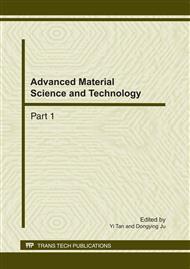p.601
p.607
p.611
p.615
p.619
p.629
p.633
p.639
p.643
Analysis of Two Ball’s Surface Contact Stress Based on Fractal Theory
Abstract:
In order to deeply investigate the contact stress state of two balls, a new fractal contact model of two ball’s surfaces is set up on the basic of traditional contact theory and new fractal contact model theory. It is proved to be true through the predicting result and the contact example respectively by using the traditional Hertz theory and the fractal theory. This model can generally reflect the infections of contact stress by the micro-factors and macro-factors of two balls, so it can ensure veracity and certainness of stress analysis. The establishment of the model supplies a basis and theory foundation for further practical application (such as contact stress calculation of rolling bearing and sliding bearing) and experimental research.
Info:
Periodical:
Pages:
619-627
Citation:
Online since:
February 2011
Authors:
Price:
Сopyright:
© 2011 Trans Tech Publications Ltd. All Rights Reserved
Share:
Citation:


